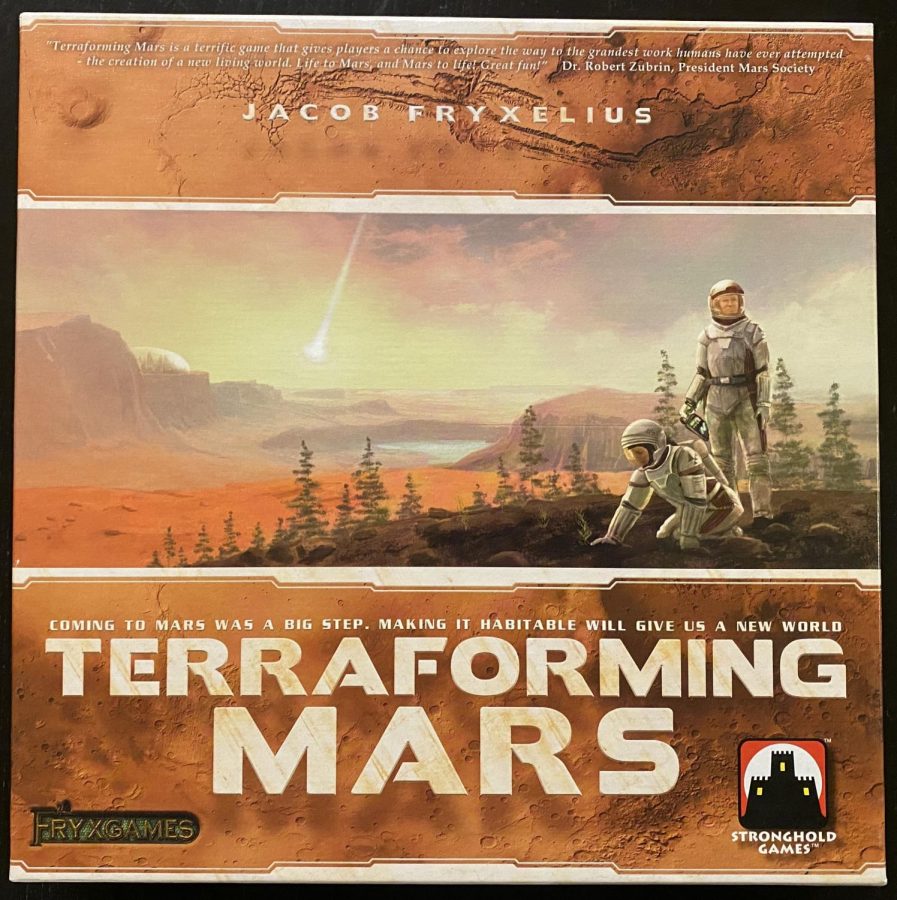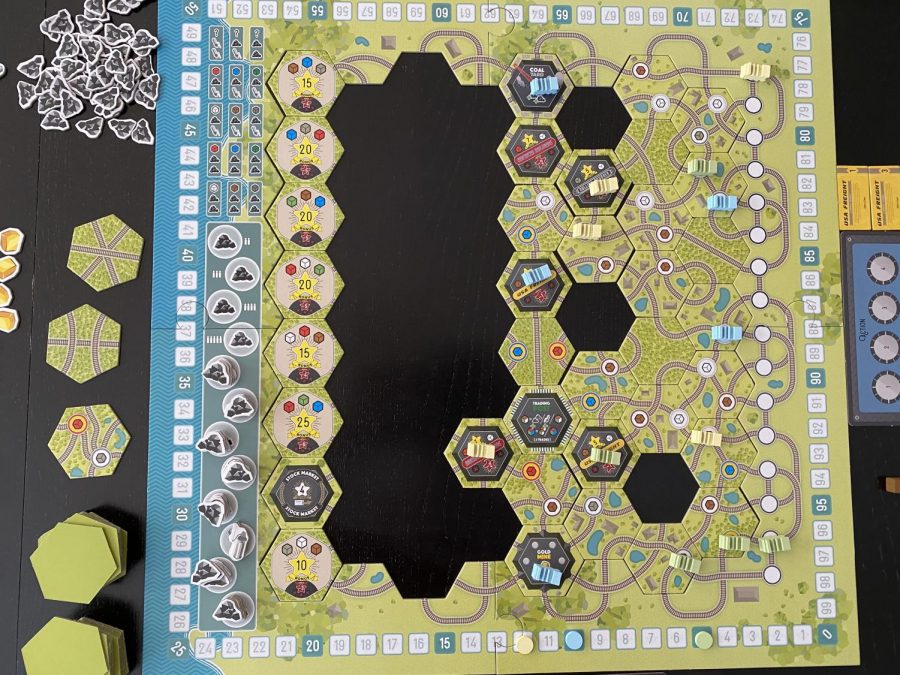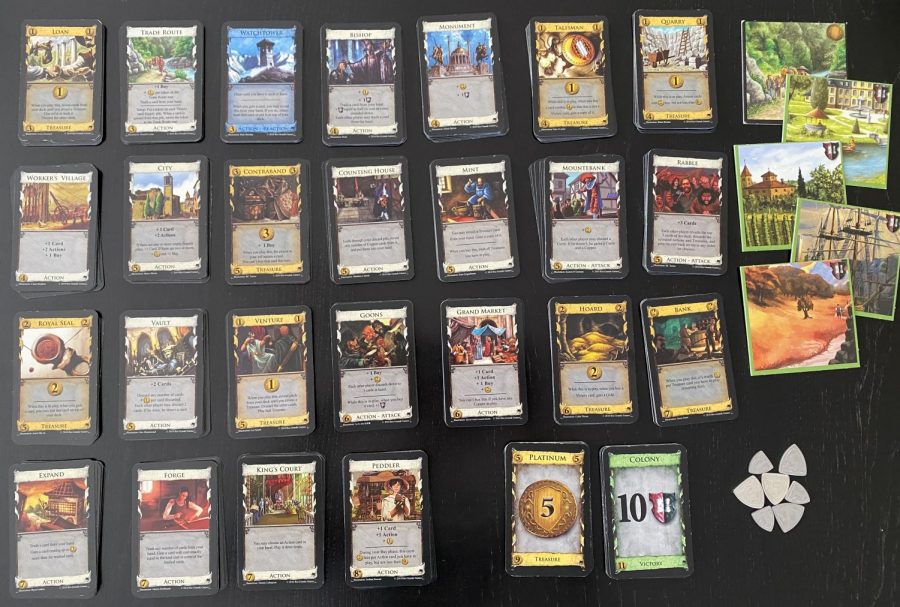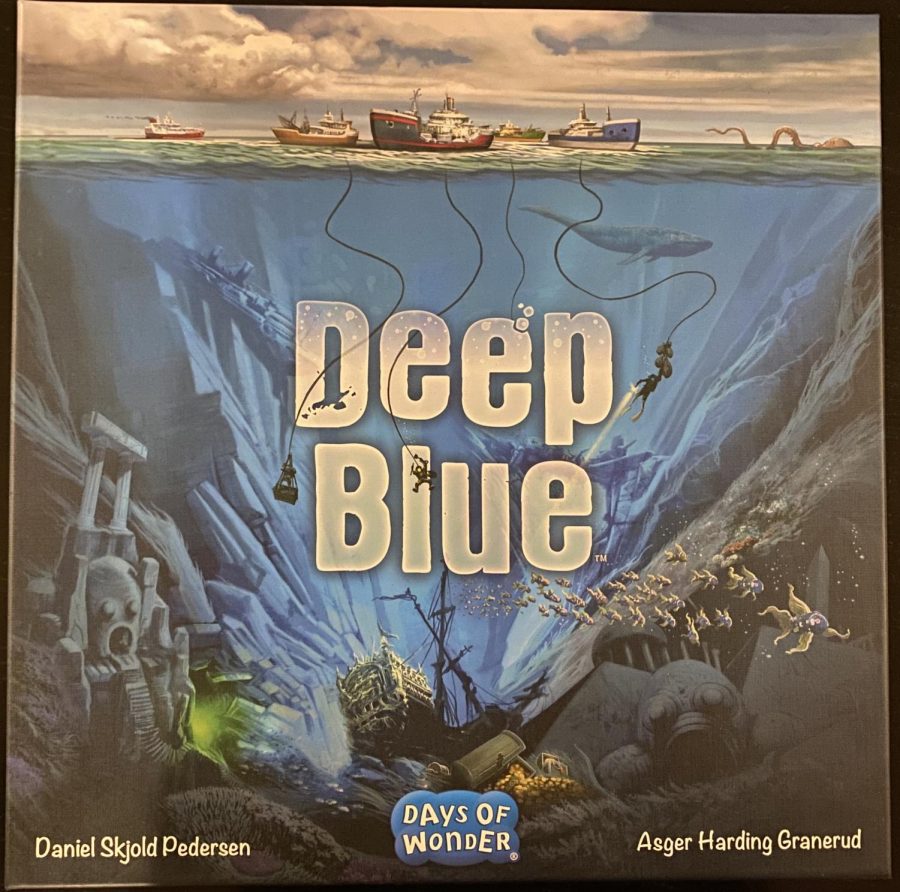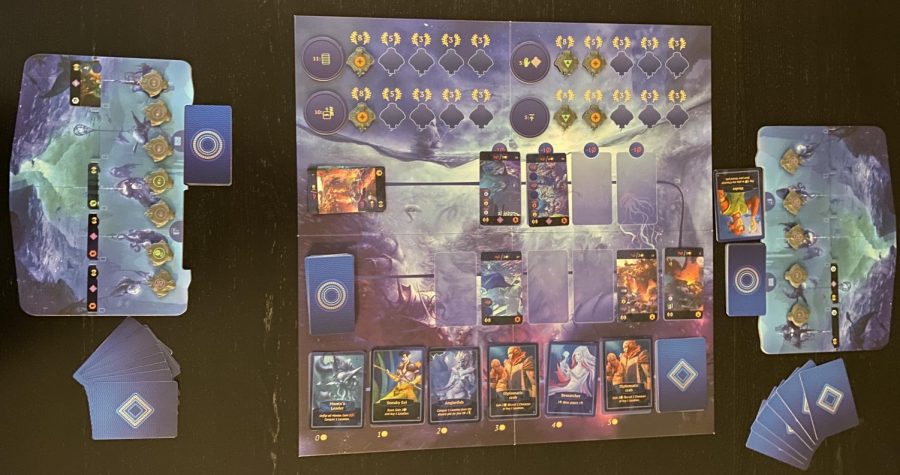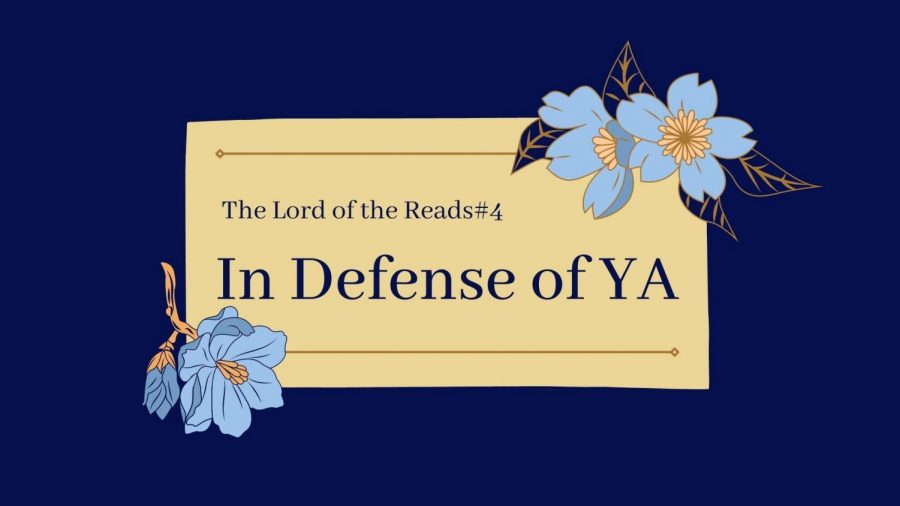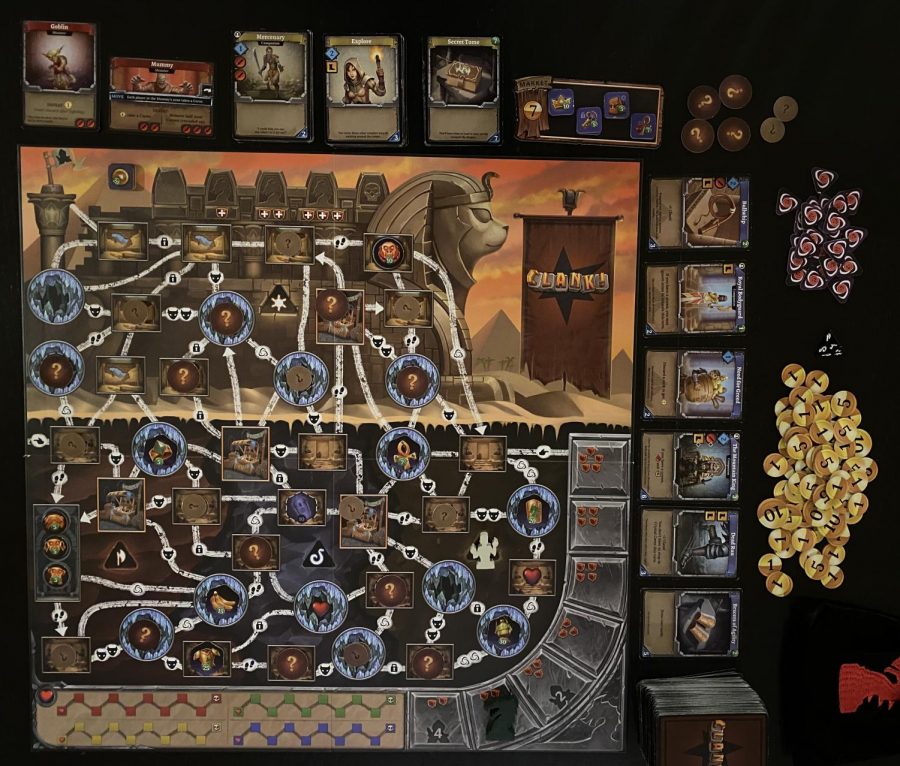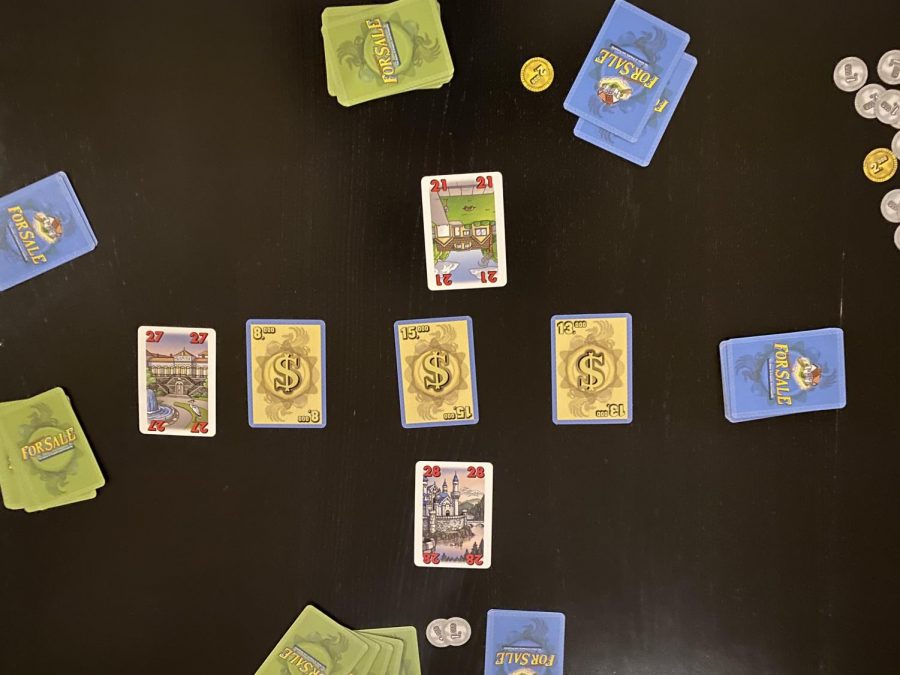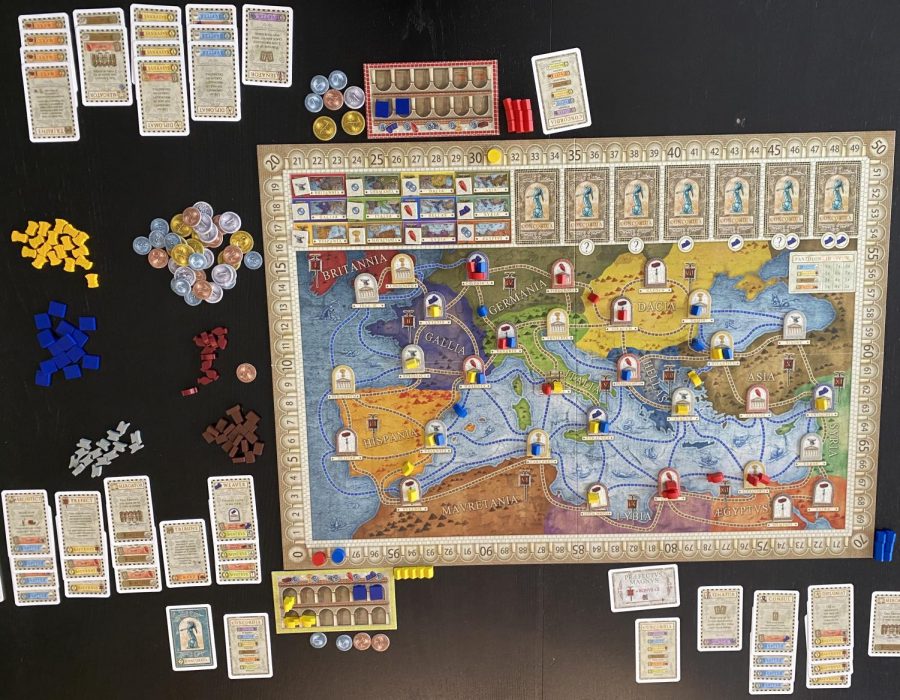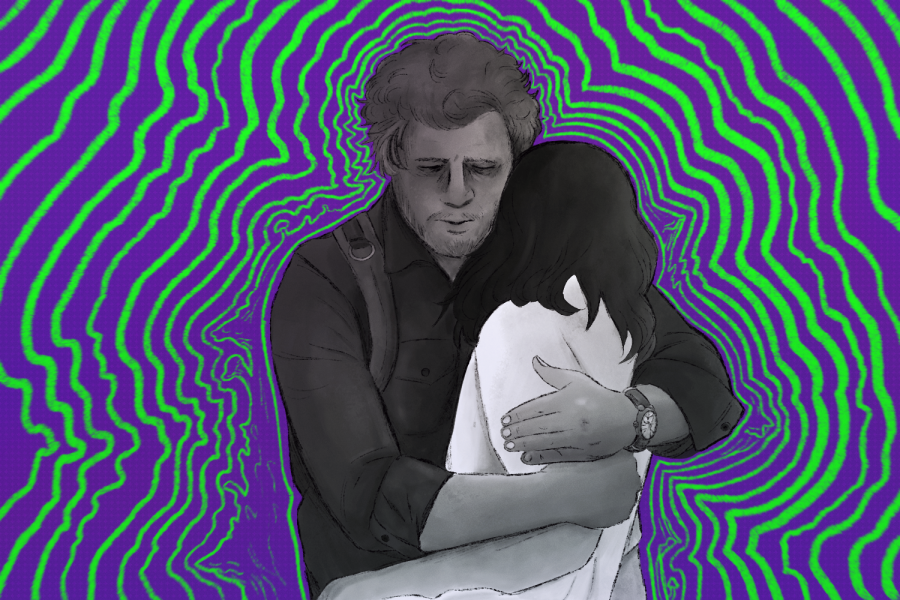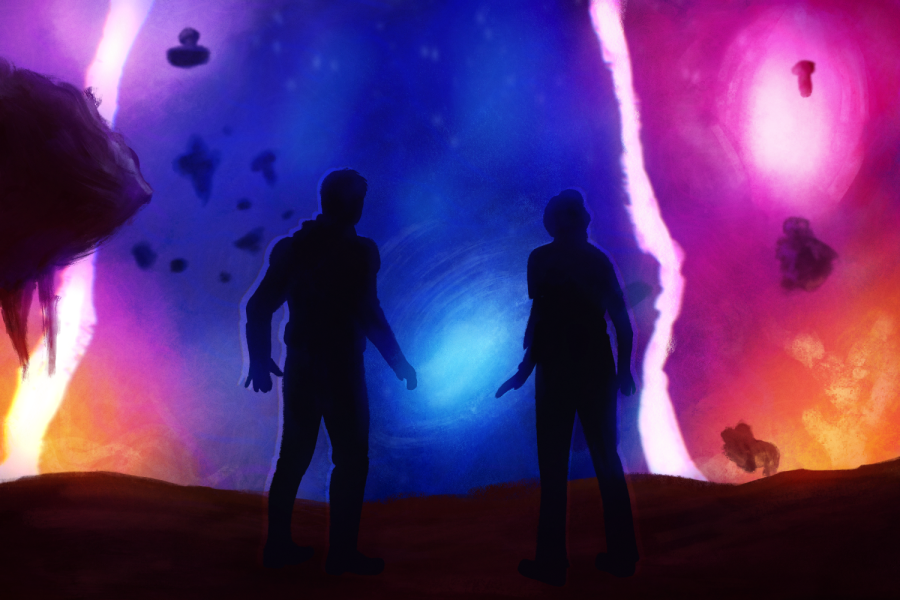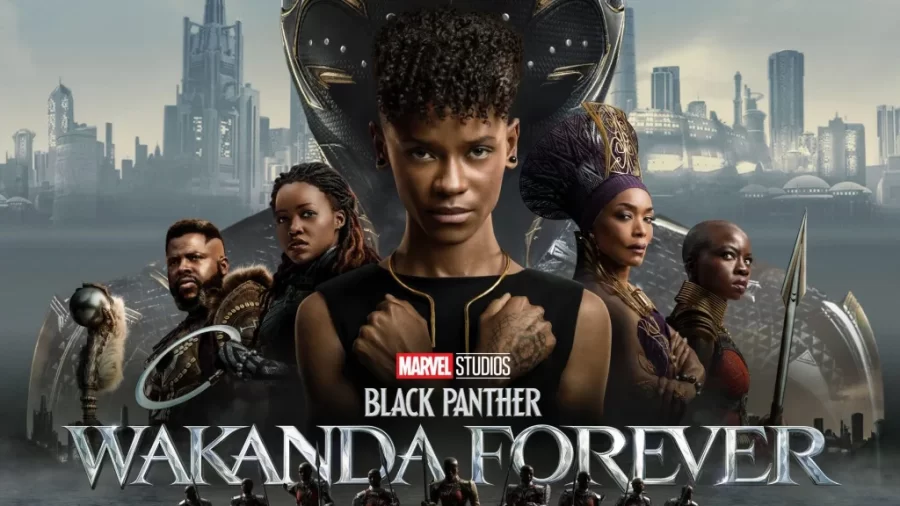After building to the limits on Earth, it’s time to reach a new horizon as you take your corporation on a mission to terraform Mars faster and better than your competitors. Terraforming Mars is a heavy and strategic game designed by Jacob Fryxelius and illustrated by Isaac Fryxelius. The game scales from one to five players and takes at least two hours to play. Despite its long length, Terraforming Mars attempts to capture the players in an immersive thematic experience as they raise their productions, build cities and greenery, and race for milestones and awards. I’ll show you the basics of how the game works and then share my thoughts on whether Terraforming Mars is a worthwhile game for its length.
How to Play
Before I explain any of the rules, you need to know how to get points in this game. You get points by increasing your terraforming rating, which happens every time you increase the oxygen level, increase the temperature, or place an ocean tile on Mars. The game ends when all three of those global parameters are completed. You will also get points for claiming milestones, reaching an objective during the game, and winning awards, given to the player who has the most of the depicted parameter at the end of the game. Additionally, you will get points for cities and greenery tiles on Mars that you control. Lastly, some of the project cards that you play throughout the game will be worth points as well.
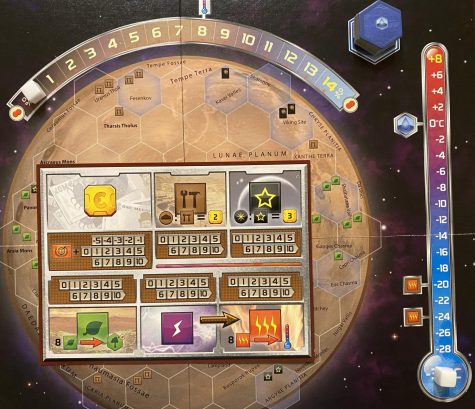
During the game setup, each player will get a player board and a bag of cubes in their color. The player board has six sections for the game’s different resources: Megacredits, steel, titanium, plants, energy, and heat. Each player will keep one-valued bronze cube, five-valued silver cubes, and ten-valued gold cubes in each section to mark how many resources they have of that type. Players will use their colored cubes and the number tracks on the player boards to mark how much of each resource they get during the production phase. Each player starts with one production of each resource type or no production of each type for an advanced game. During the rules explanation, I’ll explain what these resources are used for.
At the start of the game, each player gets two corporation cards and 10 project cards. Players must choose one of the corporation cards to keep and any number of the project cards they want to buy. Corporation cards depict a special ability and a starting amount of Megacredits, the currency used to buy and play project cards. Once all players have made their decision, players take turns revealing their corporation, taking initial Megacredits and other resources granted by the corporation, and spending three Megacredits for each project card they chose to buy. The bought cards go into the player’s hand, and the rest are discarded. Alternatively, players can use a basic corporation for their first game even while experienced players use the regular ones. The basic corporation allows the player to keep all ten of their project cards for free, but it does not offer any other special ability.
Now it is time to start playing the game. The game takes place over many rounds, called generations, until the end of a round when all three global parameters are met. Each generation consists of the following four phases.
Player Order
At the start of each generation except for the first one, the first player marker is passed to the next player in a clockwise direction.
Research
During the research phase, each player draws four cards from the top of the project deck. They look through them and choose any number of them to buy, paying three Megacredits per card they add to their hand. This phase is skipped in the first generation because players already looked through 10 cards and bought some. The games include an advanced ruleset where players can draft their four cards before choosing which ones to buy using a drafting process similar to the one used in 7 Wonders.
Action
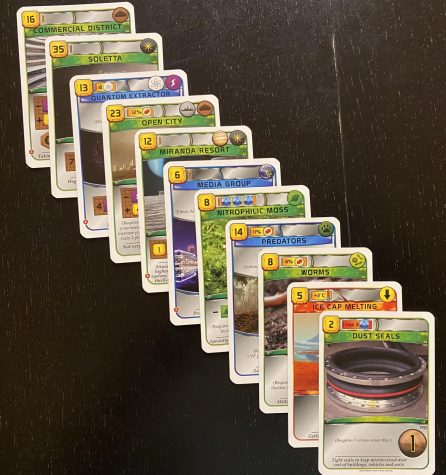
The action phase is the main part of the game. During this phase, each player performs one or two actions. There are eight possible actions that a player can take.
The central action that drives the game is playing a project card. The player must spend the Megacredits shown in the top left corner and meet any requirements that the card has, which are also shown in that corner. The player then gets the effect of that card in the bottom left corner. The cost, requirements, and effects of each card are also explained in words. The bottom right corner shows how many victory points the card is worth, if it is worth any points, and the top right corner shows what tags, or categories, the card falls into. The picture on the left explains the meaning of the tags.
Cards fall under three different groups based on their color. Green cards only have an effect immediately when you play them and then stay in play face-up. Red cards are similar to green cards, but they are placed face-down in a pile by your cards. That means that their tags only apply when you play them, while the tags of the green cards apply forever. Blue cards may have an effect at the bottom of the card that occurs immediately, but they all have either an action or effect on the top part of the card that lasts for the whole game.
The second action that players can take is to take an action on a blue card. Players take the action on the card and put one of their cubes on it to mark that they already performed that action and cannot do so again until the next generation, or next action phase. Some blue cards have effects instead of actions; these effects apply when a certain condition occurs and can be used any number of times per round in any situation where it applies.
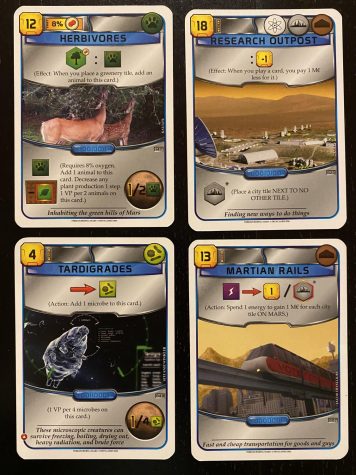
When players do not like the cards in their hand or want specific things their projects cannot provide, a standard project might be what they are looking for. Standard projects allow players to take basic actions in the game, such as raising the temperature or placing a greenery tile, but they cost more Megacredits than project cards.
Another action players can take is to claim a milestone. There are five milestones at the bottom of the board. If a player has met the condition for the milestone, such as controlling three cities or having eight building tags in play, they can pay eight Megacredits to claim it and place one of their cubes on it. However, only three of the five milestones can be claimed in each game.
A similar action that players can take is funding an award. There are five awards that provide points for the player who has the most or second-most of the depicted item, such as heat resources or Megacredit production. Like the milestones, only three of the five awards can be funded, but each subsequent award costs more Megacredits to fund.
The last two actions help raise global parameters. A player can spend eight plant resources to place a greenery tile on the map and raise the oxygen level. If possible, a greenery tile must always be placed adjacent to another tile controlled by that player. A player can also spend eight heat resources to raise the temperature one step. Whenever a player raises a global parameter, they move their terraforming rating up one space, which is both a victory point and a Megacredit production.
If a player does not take at least one of these actions on their turn, they must pass. When all players pass, the action phase for this generation ends.
Production
At the end of each generation, players gain resources of each type equal to its production. For Megacredit production, players add up the production shown on their player board to their terraforming rating. For the other five resources, all the production is shown on their player board. After the production phase, the generation is over. Unless all three global parameters are met, another generation is played.
Once all the global parameters are met, players get one last chance to convert any plants they have into greenery tiles. Then it is time for scoring.
Each player’s terraforming rating serves as their baseline score. Then, each player adds points for the funded awards; they get five points if they won the award and two points if they got second place. Players get five points for each milestone they claimed. On the map, each greenery tile is worth one point, and each city is worth one point per greenery tile surrounding it; anyone can own the greenery tiles surrounding a city. Lastly, players add up the points from the project cards they played, including the red cards that are face-down. The player with the most points is the winner.
Final Thoughts
Terraforming Mars is a great game. It does amazing in many categories but only meets standards in others. Let’s start with the few aspects that I think are just okay and then finish strong.
The first one is the artwork. The artwork on the board and box cover is good, but the artwork quality for the cards is inconsistent, like in Dominion, where some cards look better than others. The card quality is good and the rest of the components are decent, but it’s obvious that various artists illustrated the cards.
Some of the projects in the game have red borders around resources and production symbols, which means that you can remove them from any player. The problem I have with those cards is that they add an unnecessary “take that” element to the game. While it does make sense with the corporation vs. corporation theme, it takes away a lot of the fun when the production or resources you worked hard to get are taken away. In games with three or more players, these cards only attack one opponent, which can result in players kingmaking, or helping another player win or lose the game.
My last criticism is that the game forces players to play the way that most players are playing. The game appears to have two main strategies. One is entirely focused on raising global parameters from cards and standard projects, rushing the end game, and hoping that you can have a big early lead. The other strategy revolves around playing lots of cards worth victory points, building up large amounts of production, and getting more victory points in a longer game. If more players work on global parameters, the game ends faster, and all players that used that strategy are more likely to win. If more players work on building an engine and playing project cards for their long-term benefit, the game ends slower, and all the players that prepared for a longer game will earn more points.
I can see the pressure to go with the majority of the players to be problematic in many groups. However, I experience a different reality in my games since everyone I play with always goes for the longer game no matter what, which forces me to hop on to that strategy. If your group is likely to play the same way each time, you will probably miss out on a big part of the game. This is definitely something you should consider before you buy Terraforming Mars.
Everything else that I haven’t mentioned yet is not a problem with the game. First of all, the theme is strong, and I really feel that I am running a corporation and terraforming Mars when I play. The card names, resources, and rules all make sense thematically; there are no extraneous rules that are only included to balance the game.
The theme is so strong that it masks the 120-minute minimum game length. The game is very long and gets slightly longer with more players since the ending condition remains the same. However, the game does not feel that long because you are always thinking about what you will do. Since you never have enough Megacredits, you always want to play more cards than you can. Regardless of whose turn it is, you are counting your money and figuring out what you can do this generation and what you want to do first.
The game may appear to be very solitaire with players playing cards and building up their own production, but there are many elements of player interaction. There is one negative player interaction with the “take that” cards. Still, there is also a significant amount of player interaction on the map itself as players compete for places to put their greenery tiles and control cities. Occasionally, there are races to claim a particular milestone or fund an award at the lowest price, which is another positive form of direct competition in the game.
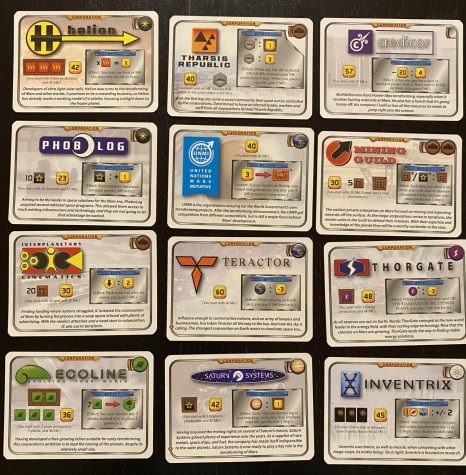
The last thing I will mention is the high replayability. A huge reason why I am willing to play Terraforming Mars is that every game is different. I will get a different corporation, which focuses my strategy on something that I may not have done in the previous game. Also, the game has at least 100 project cards, and there are no duplicates, so I will not be able to get the same card combinations that I did in the past. I like that the game forces you to do something different each time and gives you interesting choices.
I haven’t taught this game to anyone in a long time until writing this, but I’m not sure if I would give a new player a basic corporation or one of the regular ones. I think they are balanced, but the regular corporations are more fun and easier to play because they give you something to focus on. The basic corporation is too open-ended, which I think is actually more challenging for new players. The drafting variant is a good alternative if you think getting four cards from the top of the deck is too lucky, but it does add a considerable amount of time to the game. I personally don’t think that the draft variant is necessary; it’s not worth the extra game length with lots of players.
To summarize my thoughts on Terraforming Mars, I think that it is an amazing game. The immersive theme, numerous corporations, and interesting decisions are all highlights when pulling this game off the shelf. The few negative remarks I had are really just nitpicking when compared to the things the game does well. If you like games with a strong theme, complex and long games, or economic and resource management games, be sure to check out Terraforming Mars. For me personally, I am giving Terraforming Mars, without any of the expansions, a 7 out of 10.
[star rating=”3.5″]

